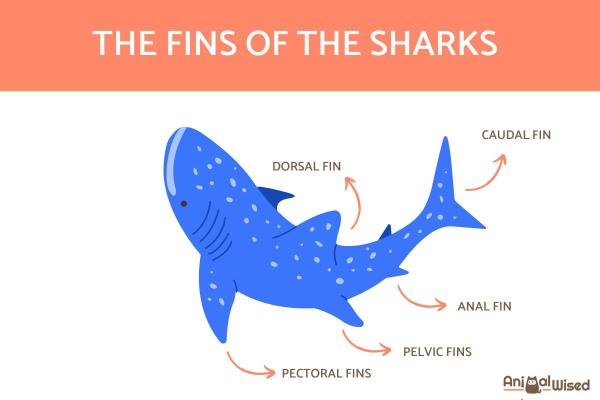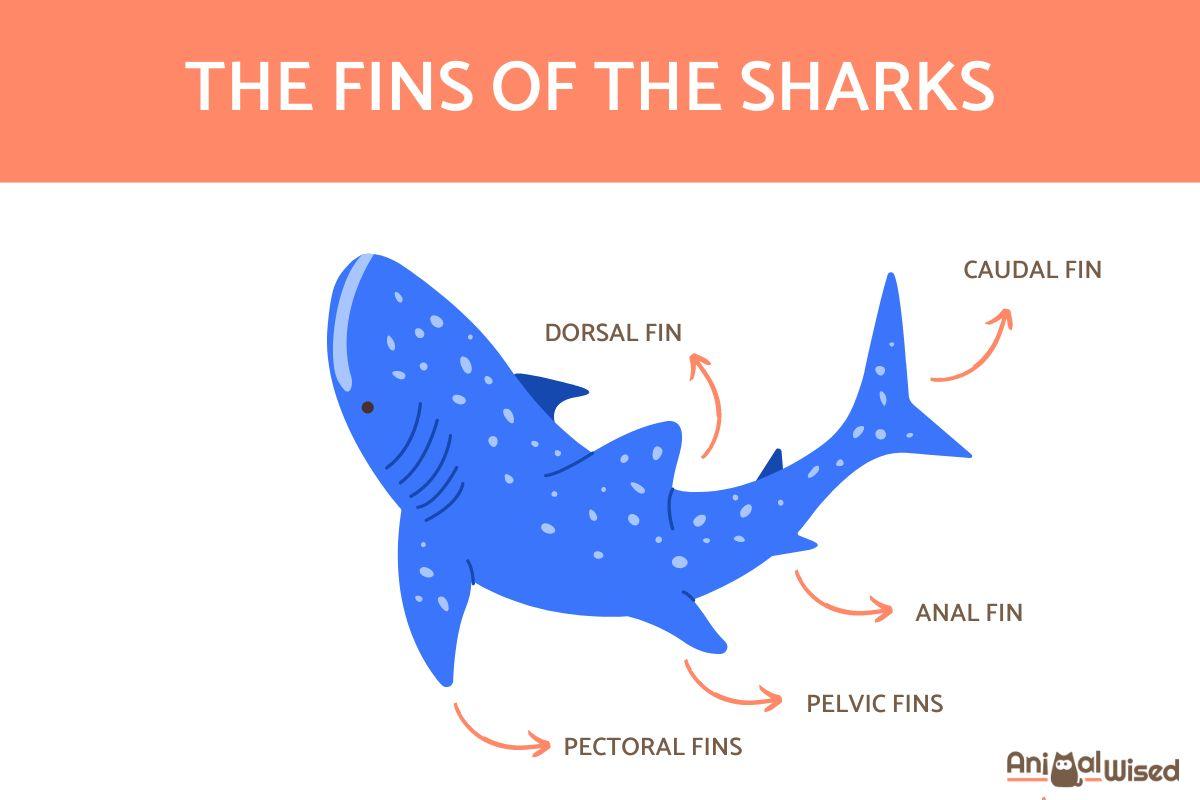How Many Fins Does a Shark Have?


There is no doubt that sharks are captivating creatures, and their presence in nearly every corner of the oceans of our planet fuels our fascination with them. Their status as apex predators has made them iconic symbols of the marine world, often featured in tales and films. However, sharks are more than just impressive images and contributions to popular culture; they are extraordinary creatures that play an important role in the ecosystems of the ocean.
In the following AnimalWised article, we'll explore the anatomy of sharks, with a specific focus on their fins. Join us as we uncover how many fins sharks possess, their various functions, and the unique qualities that make these fins remarkable adaptations in the marine world.
How many fins do sharks have?
Sharks exhibit five types of fins in their anatomy, although the presence of some fins may vary depending on the species. Let's delve into the five primary types of fins in sharks:
- Dorsal fin: the dorsal fin is arguably the most iconic feature of sharks. Typically, sharks have a single dorsal fin located on their upper body. However, in specific species like the hammerhead shark, this fin may be forked.
- Pectoral fins: positioned on the sides of the body near the head, pectoral fins play a crucial role in maintaining stability and facilitating maneuverability. Sharks typically possess two pectoral fins.
- Pelvic fins: located on the ventral side near the abdominal region, sharks have two pelvic fins. These fins contribute to the shark's balance and control during swimming.
- Anal fin: positioned towards the rear of the body, in proximity to the caudal fin, sharks typically possess a single anal fin. This fin assists in steering and balance.
- Caudal fin (tail fin): the caudal fin, also known as the tail fin, serves as the primary propulsion fin for sharks. Its shape can vary significantly across species, adapted to different swimming styles, ranging from speed-oriented designs in predatory sharks to maneuverability-focused shapes in deep-sea sharks. Usually, sharks have one caudal fin.
While most shark species adhere to this standard set of five fin types, there can be variations in the size and shape of these fins depending on the species and its specific adaptations.

How did sharks evolve fins?
The evolution of fins in sharks traces back to early ancestral fish, from which modern sharks have descended. Initially, simple paired fins provided stability and steering capabilities. Over time, these fins became more specialized, with pectoral and pelvic fins emerging to control movements and maintain position.
The dorsal fin evolved to act as a rudder and stabilizer, crucial for balance and precise turns during predation. Perhaps the most significant adaptation was the development of the caudal fin, with various shapes tailored to species-specific swimming styles.
Sharks further adapted their fins to their ecological niches, such as hammerhead sharks' flattened heads and elongated dorsal fins for enhanced stability and maneuverability in hunting. These fin adaptations reflect sharks' remarkable efficiency and adaptability as apex predators in the marine environment.
For further insights into the toothy wonders of sharks, don't miss our article on how many teeth do sharks have and the various types they possess.
What are shark fins like?
Shark fins are remarkable anatomical structures that are vital to the survival of these apex predators. Unlike the fins of most bony fish, which are comprised of bones, shark fins are primarily composed of cartilaginous tissue. This cartilage is significantly lighter and more flexible than bone, providing sharks with several crucial advantages in their marine environment.
The lightweight nature of cartilage reduces a shark's overall body weight, making them less cumbersome in the water. This inherent buoyancy allows for increased agility and maneuverability, key traits for successful navigation in their aquatic realm. In the following section, we will delve into the specific functions of these fins.
Additionally, shark fins may also contain other tissues, such as muscles, blood vessels, and skin. These additional components contribute to the overall shape and function of each type of shark fin, whether it's the dorsal fin, pectoral fins, pelvic fins, anal fin, or caudal fin. Each of these fins is predominantly composed of cartilage, uniquely adapted to fulfill its specific role in the locomotion and behavior of these extraordinary marine creatures.
For more on shark anatomy, check out our article on how many bones do sharks have to learn about their unique skeletal adaptations.
What are shark fins used for?
Shark fins, much like the fins of other fish, serve diverse functions depending on their type.
The dorsal fin plays a crucial role in maintaining a shark's stability while swimming. It acts as a rudder, helping the shark stay upright and navigate effectively. Additionally, it may have functions in thermoregulation, allowing sharks to regulate their body temperature when exposed to sunlight. This adaptation ensures they maintain an optimal temperature for their physiological processes.
The tail fin is the powerhouse of a shark's propulsion system. By moving it from side to side, sharks generate thrust and force water backward, propelling themselves forward. The tail fin's shape can vary among species, tailored to their specific swimming styles, whether it's speed-oriented for predatory sharks or designed for maneuverability in deep-sea sharks.
Positioned on the sides of the body near the head, pectoral fins play a crucial role in controlling a shark's inclination and facilitating precise turns. These fins are particularly useful during hunting and navigating in shallow waters. Pectoral fins enable sharks to maintain balance during their swim and guide themselves effectively during navigation.
Each type of shark fin has evolved to fulfill distinct functions, contributing to the shark's remarkable adaptability and effectiveness in their aquatic environment. These adaptations are essential to their survival and success as apex predators in the ocean.
Dive into the intriguing world of shark vision as we explore whether sharks are truly blind or color blind in this other article.
If you want to read similar articles to How Many Fins Does a Shark Have?, we recommend you visit our Facts about the animal kingdom category.
- Jamie, M. (2021). sharks . Sharks, 1-100.






